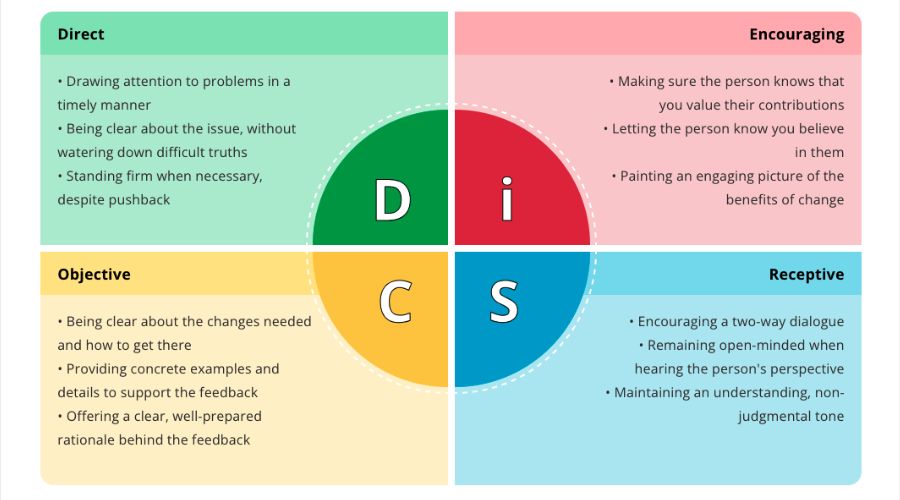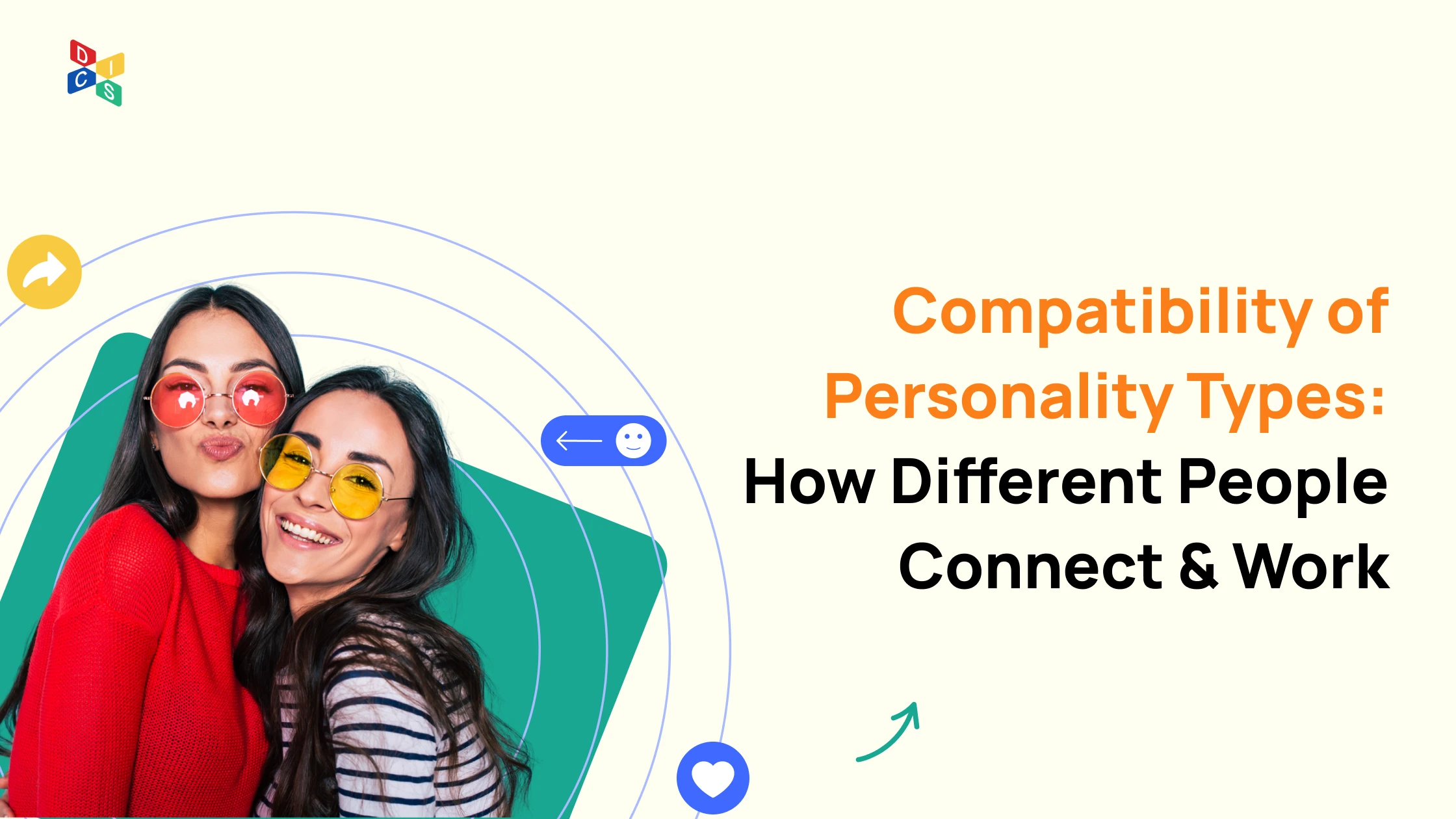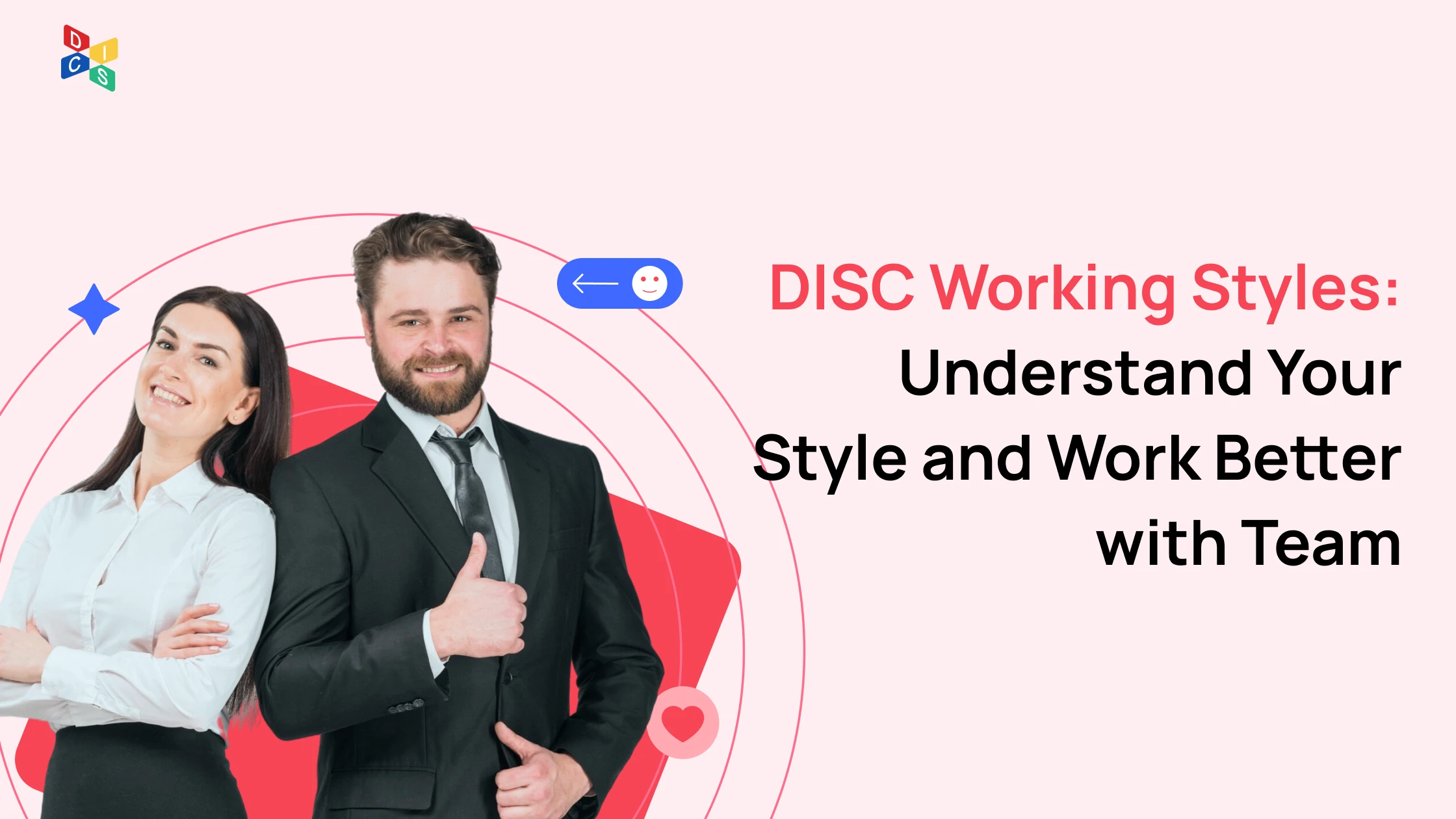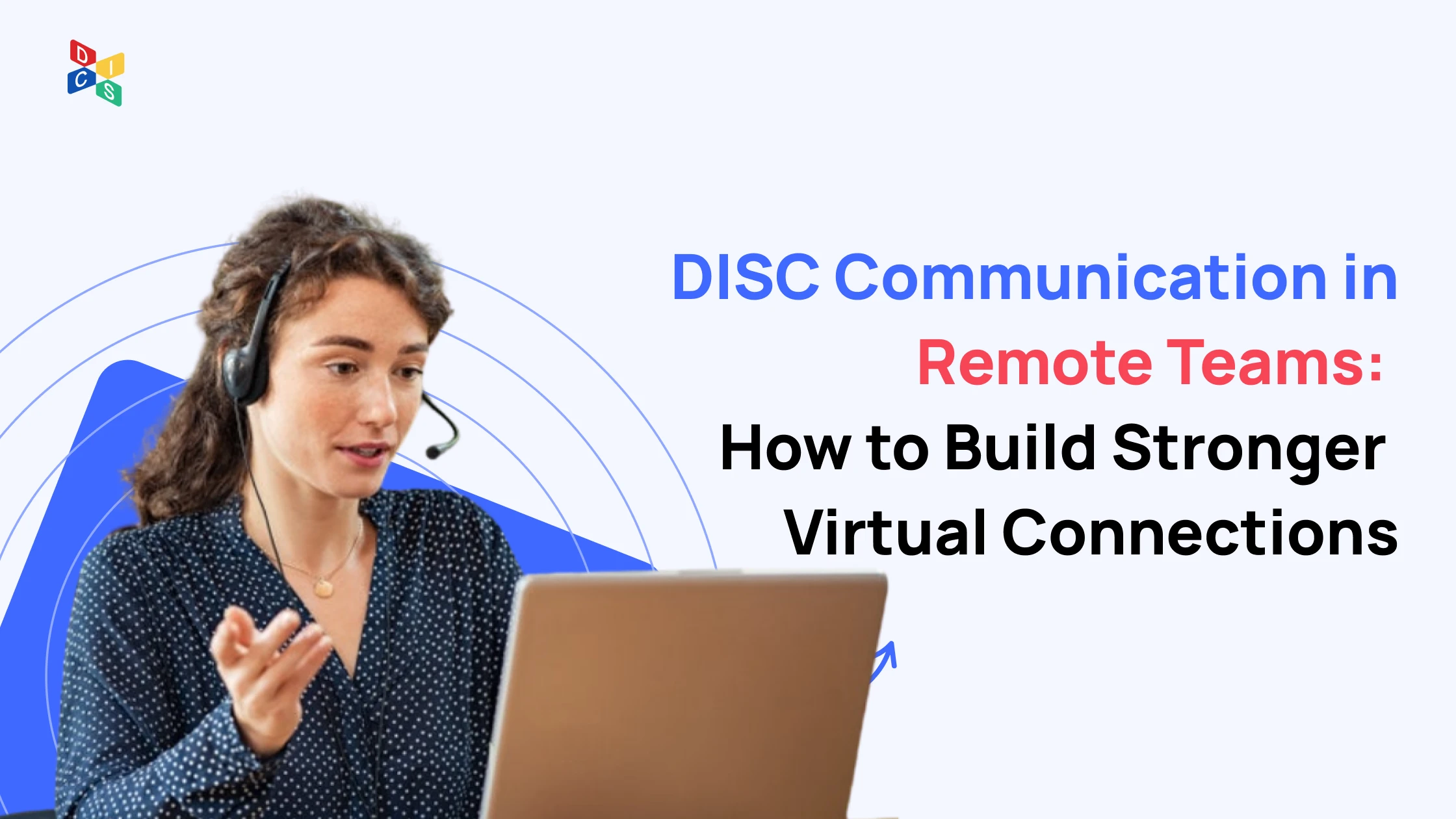Table of content
Which DISC Personalities Work Best Together to Build Effective Teams
Discover which DISC personalities work best together and how the right mix boosts collaboration, reduces conflict, and builds stronger teams.
When it comes to teamwork, conflicts often arise because people have different ways of thinking and communicating. The DISC model, introduced by discpersonalities.com, offers a practical solution by helping you understand which DISC personalities work best together. This approach not only improves collaboration but also enhances productivity and job satisfaction.
In this article, we’ll explore how personality compatibility can strengthen team performance and create lasting harmony at work.
Understanding DISC Personality Types
Before answering the question of which DISC personalities work best together, it is essential to understand the four core personality styles that make up the DISC model.
Each type has unique behavioral traits that influence how people communicate, solve problems, and interact within a group. A clear grasp of these categories provides the foundation for identifying strong team compatibility and building balanced workplace dynamics.
- Dominance (D) type
Individuals with a Dominance profile are direct, decisive, and results-driven. They prefer to take charge, focus on big-picture goals, and are often willing to make bold moves to reach outcomes. Their natural leadership and determination help drive progress, though they may need others to handle finer details.
- Influence (I) type
Influence types are expressive and enthusiastic, thriving in environments where collaboration and positive energy are valued. They enjoy connecting with people, inspiring motivation, and creating a sense of unity. While they may sometimes overlook structure, their optimism and social skills are powerful assets in group projects.
- Steadiness (S) type
Steady personalities bring patience, reliability, and a supportive approach to teamwork. They are good listeners who value harmony and prefer consistency in how tasks are handled. Their cooperative nature helps build trust, although they can be hesitant toward sudden changes or conflict.
- Compliance (C) type
Compliance-oriented individuals are detail-focused, analytical, and careful in their decision-making. They value accuracy, structure, and logical processes, making them highly dependable in roles requiring precision. At times, perfectionism may slow them down, but their commitment to quality ensures reliable results.

Why Compatibility Matters in DISC Relationships
Compatibility in DISC is not about labeling people but about recognizing patterns that influence teamwork, communication, and trust. When we understand these dynamics, we can better identify which DISC personalities work best together and create stronger, more productive connections.
1. Building Effective Collaboration
DISC compatibility plays a crucial role in fostering smoother collaboration within teams. When people with complementary strengths work together, tasks are distributed more effectively, and objectives are achieved with greater ease.
For example, a detail-oriented profile can balance the energy of someone who prefers quick decisions, allowing projects to move forward without sacrificing accuracy. This balance reduces unnecessary tension and helps groups work toward shared outcomes more efficiently.
2. Reducing Misunderstandings and Conflict
Many conflicts in relationships arise not from disagreement itself but from unspoken differences in style. A decisive D-type, action-driven individual may push for immediate choices, while a supportive S-type partner may prefer a slower, more thoughtful approach.
When both recognize these tendencies and show respect for each other’s methods, clashes are minimized. Instead of frustration, conversations remain constructive, and problem-solving becomes more collaborative.
3. Increasing Productivity and Satisfaction
Workplaces benefit when colleagues respect each other’s natural pace and communication preferences. Teams that acknowledge these differences tend to experience less stress and higher levels of satisfaction.
Employees feel valued when their approach - whether rapid and bold or cautious and analytical - is appreciated. This recognition enhances motivation, strengthens performance, and creates an environment where productivity grows without unnecessary pressure.
4. Strengthening Long-Term Relationships
Awareness of which DISC personalities work best together goes beyond short-term collaboration. It creates a foundation of trust, adaptability, and mutual respect that sustains long-term professional and personal relationships.
By appreciating different behavioral styles, people develop resilience in working partnerships and nurture bonds that remain productive over time.

Which DISC Personalities Work Best Together?
Knowing which DISC personalities work best together is essential for building partnerships and creating effective, high-performing teams. Each profile has unique strengths, and while there is no single “perfect” pairing for all situations, certain combinations often complement each other in the workplace.
The effectiveness of these pairings depends on the context, goals, and roles involved. Below are some of the most commonly seen synergies.
1. Dominance (D) with Influence (I)
Pairing Dominance with Influence creates an energetic and forward-looking partnership. D types are decisive, competitive, and goal-driven, while I types bring enthusiasm, communication skills, and creativity. Although both are fast-paced, their motivations differ: D pushes for results, and I thrives on relationships and inspiration.
In practice, this combination works well in sales or leadership roles where bold direction needs to be balanced with charisma and motivation. D drives progress with clear targets, while I keeps the team engaged and excited. When managed effectively, this duo demonstrates which DISC personalities work best together in dynamic, people-centered environments.
2. Steadiness (S) with Conscientiousness (C)
S and C personalities form a stable and reliable partnership. S types are supportive, patient, and relationship-oriented, while C types are analytical, precise, and process-driven. Their shared preference for caution and planning ensures that tasks are executed thoroughly and thoughtfully.
This duo thrives in environments that require consistency and trust, such as HR, compliance, or customer service. S maintains harmony and team spirit, while C ensures accuracy and adherence to standards. By complementing each other, they show how which DISC personalities work best together when reliability and detail orientation are crucial.
3. Influence (I) with Steadiness (S)
The I and S combination blends inspiration with harmony. I personalities are natural motivators who energize their teams with optimism and networking skills. Meanwhile, S personalities ground the team with patience, empathy, and steadiness.
This pairing works particularly well in team-based projects, marketing, or customer care, where creativity must be matched with attentive listening. I sparks innovation and momentum, while S ensures sustainable collaboration and prevents overextension. Together, they reflect which DISC personalities work best together to build both excitement and stability.
4. Dominance (D) with Conscientiousness (C)
D and C might seem like opposites—one thrives on speed and decisiveness, the other insists on accuracy and structure. At first glance, they represent a classic case of which DISC profile clash the most. However, when aligned, they create a powerful balance of action and precision.
In project management, strategy, or operations, D ensures quick decision-making and progress, while C safeguards against errors with data, facts, and analysis. The result is a partnership that combines momentum with accountability. This dynamic highlights which DISC personalities work best together when both vision and risk management are required.

5. Balanced Teams with All Four Types
While one-on-one pairings can be powerful, the highest-performing groups often include all four DISC types. True balance emerges when Dominance drives results, Influence builds relationships, Steadiness maintains stability, and Compliance ensures accuracy. This mix reflects the most complete answer to which DISC personalities work best together.
Examples of balanced team dynamics:
- A Troubleshooting Team
For fast-moving problem-solving, D (Drive) and I (Influence) profiles push for action and innovation. C (Clarity/Compliance) profiles add precision to ensure solutions are reliable. S (Support/Steadiness) may work better behind the scenes, providing support rather than leading decision-making in urgent scenarios.
- A Networking Team
I profiles shine in building connections at conferences or industry events. Their outgoing nature wins new clients, while S types provide a supportive role by nurturing trust and long-term relationships. C types, less people-oriented, can contribute later in follow-up tasks or delivery.
- An Emergency Task Force
D personalities make quick, decisive choices, essential in crises. C personalities bring a cautious, detail-oriented perspective, reducing mistakes under pressure. Together, they balance speed with quality, ensuring effective crisis management.
- A Negotiating Team
D profiles drive assertiveness and ensure strong outcomes, while S types keep discussions respectful, inclusive, and cooperative. This partnership prevents conflict escalation and leads to solutions that benefit all stakeholders.
Practical outcome:
In larger groups, we also see what personalities work best together in relationships beyond simple pairings. A team with all four DISC styles benefits from the strengths of each type. Diversity ensures that no single trait dominates, allowing for more balanced strategies, better decisions, and higher performance across different situations.
| Combination | Key Strengths | Best Contexts | Practical Outcome |
| Dominance (D) + Influence (I) | Energetic, bold direction + charisma, motivation | Sales, leadership, dynamic projects | D sets goals and drives progress, I keep team engaged and inspired |
| Steadiness (S) + Conscientiousness (C) | Patience, empathy + precision, structure | HR, compliance, customer service | Reliable execution, harmony, and accuracy |
| Influence (I) + Steadiness (S) | Inspiration, optimism + stability, empathy | Marketing, customer care, teamwork | Innovation balanced with sustainable collaboration |
| Dominance (D) + Conscientiousness (C) | Decisiveness, speed + accuracy, analysis | Strategy, project management, operations | Combines fast action with risk control and accountability |
| Balanced Team | Results-driven + relationship-building + harmony + accuracy | Troubleshooting, networking, emergency response, negotiation | Highest performance through diversity, balanced strategies, and reduced blind spots |
Strategies to Improve DISC Compatibility at the Workplace
Before diving into specific practices, it’s useful to look at three core strategies that explain which DISC personalities work best together in a professional setting. These approaches help guide collaboration and ensure smoother communication.
Align Around Shared Objectives
When people search for style compatibility, the answer often depends on how well individuals can align their goals. Compatibility is not just about the natural fit of personalities but about whether expectations are clarified from the beginning.
In professional settings, shared objectives may stem from organizational mission or vision statements, which provide direction and reduce confusion. Yet even within teams, expectations are not always explicitly stated. This lack of clarity can create tension when projects require collaboration and quick decision-making.
Taking time to openly discuss goals—whether simple or complex—helps colleagues define what success means in practice.
For example, if two departments agree to improve cross-functional communication, they still need to clarify what that looks like in daily workflows, such as regular updates or shared reporting tools. This kind of conversation prevents hidden assumptions and makes cooperation easier across different DISC styles.
Recognize Individual Drivers
Another key to understanding personality types and relationships is identifying what motivates each style. Every DISC type has its own psychological needs that drive actions and decisions.
A D-style personality values speed and bold choices, while an S-style prefers steady processes and reassurance. Similarly, I-styles are energized by recognition and social engagement, while C-styles seek accuracy, structure, and thorough analysis. If these needs are ignored, even well-matched personalities can experience conflict.
For instance, a D-style manager may want to make a decision quickly to move a project forward, while a C-style teammate might insist on thoroughly reviewing all data before committing. Recognizing these differences allows room for compromise. Respecting motivations not only reduces frustration but also strengthens the sense of mutual understanding, making relationships more adaptable and resilient.

Adapt Your Interaction Style
Knowing which disc personalities work best together is only the first step. The real advantage comes when you adapt the way you communicate and collaborate to match the needs of each style. This flexibility reduces friction and helps transform differences into strengths.
Here are some practical ways to adjust your approach with each DISC type:
- Working with D styles: Be clear and concise, focus on results, respect their time, and present bold ideas rather than excessive details.
- Working with I styles: Show enthusiasm, encourage collaboration, recognize their energy, and give them opportunities to express creativity.
- Working with S styles: Demonstrate patience, show genuine concern for feelings, take a steady approach, and avoid pressuring them into fast decisions.
- Working with C styles: Use logic and facts, provide space for analysis, avoid pushing for immediate answers, and acknowledge their focus on accuracy.
When individuals learn to adapt in this way, relationships shift from tension to trust. Each style feels understood and respected, which strengthens collaboration and builds resilience in both professional teams and personal bonds.
How DISC Assessment Helps Identify Compatibility
The DISC framework is widely used to understand communication patterns and teamwork preferences. When individuals take the assessment, the results reveal their dominant traits and how those traits interact in group settings. This understanding helps leaders recognize which DISC personalities work best together, while also providing actionable insights for recruitment, role assignment, and conflict management.
By highlighting where people align or differ, managers can make informed choices when pairing colleagues, and organizations can support leadership development by identifying which DISC style makes the best leader, ensuring responsibilities match natural strengths, creating balance, and boosting efficiency.
Beyond improving internal collaboration, the DISC assessment also enhances organizational culture by fostering empathy and reducing misunderstandings. Employees gain a clearer awareness of their tendencies and those of their colleagues, which encourages adaptability and strengthens professional relationships.
Read more about how to apply the DISC personality test in the workplace effectively!
Conclusion
Building successful teams starts with understanding how different personalities complement one another. The DISC model provides practical insights into communication styles, strengths, and potential challenges, helping leaders and employees see clearly which DISC personalities work best together. By applying these insights, you can foster collaboration, reduce conflict, and create stronger professional bonds. Ready to discover your own style and see how it fits with others? Take the DISC test today to unlock your compatibility.
FAQs
Can two people with the same DISC type work well together?
Yes, two individuals who share the same DISC type can work well together, especially when they understand and respect their similarities. While they may naturally align in communication and decision-making, challenges can arise if both avoid areas outside their comfort zones.
For instance, two highly dominant personalities might compete for control, while two supportive personalities may hesitate to take initiative. Awareness and self-regulation are key, as this allows them to balance their strengths and build more effective teamwork.
What if personalities clash in a team?
When personalities clash, the root cause often lies in differences in communication styles, priorities, or pace of work. The DISC assessment helps by highlighting these differences and offering strategies to manage them.
For example, a dominant type may prefer fast decisions, while a conscientious type may need more detail. By recognizing these tendencies, teams can adjust expectations and create structures for compromise. Clear communication, defined roles, and mutual respect ensure that clashes become growth opportunities rather than ongoing conflicts.
Is one DISC type better than others for leadership?
No single DISC type is inherently better for leadership. Effective leaders can be found across all four styles, as leadership success depends more on self-awareness and adaptability than on personality alone.
For example, a dominant type may excel in decisive situations, while an influence type might shine in motivating teams. Conscientious leaders bring attention to detail, and steady leaders build trust and stability. The key is understanding which disc style makes the best leader in a given context and applying strengths while managing potential blind spots.
How can DISC improve workplace collaboration?
DISC improves collaboration by giving employees a shared language to discuss differences and align expectations. Teams gain clarity about each member’s preferred working style, communication approach, and motivators. This reduces misunderstandings and helps managers assign tasks that match natural strengths.
For example, a detail-oriented type may handle analysis, while an influence type thrives in client-facing roles. By leveraging complementary skills, organizations create balanced teams where members support each other’s weaknesses. Over time, this approach fosters stronger relationships, reduces conflict, and builds a more engaged workforce.


Don't Let Your Potential Stay Hidden!
Take the DISC test today and discover your unique 'YOU', with deep insights into your true personality and potential.

Represents your instinctive behaviors and desires.
Shows the behavioral tendencies you think you should exhibit in specific situations.
Related articles
You may also be interested in
 DISCDec 02, 2025
DISCDec 02, 2025Compatibility of Personality Types: How Different People Connect & Work
Discover the Compatibility of Personality Types and how different traits connect. Learn how strengths and differences shape deeper, more lasting bonds.
 DISCNov 21, 2025
DISCNov 21, 2025DISC Working Styles: Understand Your Style and Work Better with Team
Unlock the power of DISC working styles to boost teamwork, communication, and leadership. Discover your style and learn how to work smarter with any team.
 DISCOct 24, 2025
DISCOct 24, 2025DISC Communication in Remote Teams: How to Build Stronger Virtual Connections
Learn how DISC communication in remote teams improves collaboration, reduces conflict, and helps leaders connect effectively in virtual environments.
